Monthly Archives: November 2020
NHL Morning Coffee Headlines – November 4, 2020
Scheifele: ‘I’m 100%’ after leg injury in playoffs
Winnipeg Jets superstar Mark Scheifele says he's fully recovered from the leg injury that derailed his postseason.
"I'm 100 percent, no question," Scheifele told NHL.com's Tim Campbell. "Skating every day. I don't know anyone who skates more than I do. I love being on the ice. That's my No. 1 thing. I get on the ice as much as I can."
Winnipeg's top center played only three shifts of the club's qualifying-round series versus the Calgary Flames because he caught an errant skate from Matthew Tkachuk in the back of the leg during a play along the boards. The Flames took the series in four games.
Due to Tkachuk's reputation as a pest, his intentions were questioned, but Scheifele said he doesn't believe the winger hurt him on purpose.
The 2019-20 campaign marked Scheifele's seventh full season with the Jets, and he finished the regular season tied for the team lead with 73 points in 71 games.
Copyright © 2020 Score Media Ventures Inc. All rights reserved. Certain content reproduced under license.
Seguin, Bishop each to miss 5 months
The Dallas Stars may be without two of their most important players for an extended period next season.
Goaltender Ben Bishop underwent right knee surgery to repair a torn meniscus on Oct. 21 and is expected to miss approximately five months, the team announced Tuesday.
Additionally, forward Tyler Seguin underwent a right hip arthroscopy and labral repair on Nov. 2 and is expected to also need approximately five months to recover from the date of the surgery.
Bishop was deemed unfit to play for the majority of the Stars' playoff run, which culminated in a Stanley Cup Final loss. He appeared in only three games across the postseason and ultimately missed the team's final 13 contests.
It was revealed after the playoffs that Seguin played through his injuries for the majority of the action. He tallied just two goals and 11 assists in 26 games during the postseason.
The NHL is targeting a start date of Jan. 1 for the 2020-21 season. With the injury timelines given by the team, Bishop could return in late March and Seguin in early April.
Copyright © 2020 Score Media Ventures Inc. All rights reserved. Certain content reproduced under license.
Flames considering moving Lindholm to center
Elias Lindholm's career has taken off since arriving in Calgary in the 2018 offseason. He's totaled 56 goals and 132 points in 151 games over the last two campaigns while mostly playing right wing on the team's top line with Sean Monahan and Johnny Gaudreau.
However, Flames head coach Geoff Ward is thinking about moving Lindholm back to his natural center position on a full-time basis next season.
"I think we really want to explore whether or not we have a better lineup with Elias Lindholm at center than right wing,” Ward told Sportsnet's Eric Francis. “It certainly is an option. I think with the depth we’ve acquired in free agency we can take a look at that. We know how the other lineup fits together and are comfortable with that."
The Flames haven't added any marquee names up front, but the acquisitions of Josh Leivo, Joakim Nordstrom, and Dominik Simon give the club added depth on the wings.
While it's a small part of playing center, Lindholm has won 52.4% of faceoffs in his career. The Swede also received down-ballot Selke Trophy votes in each of the last two seasons for his defensive play. Lindholm played center at times during the 2019-20 season, and Ward liked what he saw.
"(Lindholm) was a really effective player for us in the middle," he said. "You saw how much life he had. I think he really does see himself as a centerman - always has. I think he got some energy playing the position he grew up playing. We’ve got to take a look at that for sure. It’s a natural position for him - he’s certainly shown that.”
With Lindholm at right wing, Calgary's forward lines project to look something like this:
| LW | C | RW |
|---|---|---|
| Johnny Gaudreau | Sean Monahan | Elias Lindholm |
| Andrew Mangiapane | Mikael Backlund | Matthew Tkachuk |
| Milan Lucic | Sam Bennett | Dillon Dube |
| Dominik Simon | Derek Ryan | Josh Leivo |
| Joakim Nordstrom |
This is one of the many options Ward could explore with Lindholm at center:
| LW | C | RW |
|---|---|---|
| Andrew Mangiapane | Elias Lindholm | Matthew Tkachuk |
| Johnny Gaudreau | Sean Monahan | Josh Leivo |
| Sam Bennett | Mikael Backlund | Dillon Dube |
| Milan Lucic | Derek Ryan | Dominik Simon |
| Joakim Nordstrom |
The trio of Lindholm, Tkachuk, and Mangiapane produced an expected goals for percentage of 56.4% in 249 five-on-five minutes last season, according to Natural Stat Trick. That's 2% better than what Tkachuk and Mangiapane generated with Backlund as their center, and 6% better than what Lindholm posted on the wing with Gaudreau and Monahan.
Leivo is coming off a fractured kneecap, but he's flashed finishing ability in the past - a necessary trait when playing with Gaudreau and Monahan.
The line of Lucic, Bennett, and Dube was excellent for Calgary in the postseason, but the latter two likely wouldn't skip a beat flanking a superior player in Backlund.
One thing is clear: Ward will have plenty of flexibility at his disposal next season.
Copyright © 2020 Score Media Ventures Inc. All rights reserved. Certain content reproduced under license.
NHL Prospects: Top 3 Atlantic Division Organizational Rankings
Red Wings sign Mantha to 4-year deal with reported $5.7M AAV
The Detroit Red Wings locked up a key piece of their core, signing forward Anthony Mantha to a four-year contract, the team announced Tuesday.
The deal carries an annual cap hit of $5.7 million, according to Sportsnet's Elliotte Friedman.
Mantha was one of the lone bright spots on the Red Wings last season. Despite the team's shortcomings, he tallied 38 points in 43 games. He missed a large chunk of the season with a punctured lung.
While he's yet to reach the 50-point mark in a season, Mantha posted strong underlying numbers a season ago.
Anthony Mantha (4x5.7m extension with Detroit) is a very strong play-driver and a very good shot; not a tremendous creator on the power-play. pic.twitter.com/6RNj37Kapx
— Micah Blake McCurdy (@IneffectiveMath) November 3, 2020
The Red Wings selected the 6-foot-5 winger 20th overall at the 2013 draft.
Detroit has $9.5 million left in cap space, with Dmytro Timashov being the team's lone restricted free agent, according to CapFriendly.
Copyright © 2020 Score Media Ventures Inc. All rights reserved. Certain content reproduced under license.
Report: Rangers, Strome over $2M apart in arbitration filings
The New York Rangers and forward Ryan Strome appear far apart in contract negotiations.
The Rangers have filed for $3.6 million in arbitration, while Strome is asking for $5.7 million, reports Sportsnet's Elliotte Friedman.
Strome's arbitration hearing is set for Thursday. The two sides can come to an agreement before then.
The 27-year-old enjoyed a career year last season, tallying 18 goals and 59 points in 70 games. He primarily centered a line with Hart Trophy finalist Artemi Panarin.
In over 700 minutes at five-on-five with Panarin last season, Strome posted an expected goals for percentage of 56.8%, according to Natural Stat Trick. In 247 minutes without Panarin, that percentage plummeted to 45.2%.
Strome, the fifth overall pick in 2011, enjoyed a breakout 50-point campaign in his sophomore season with the New York Islanders in 2014-15. But in between that campaign and the 2019-20 season, he averaged 32 points.
The Rangers have $10.9 million in projected cap space, according to CapFriendly. In addition to Strome, Brendan Lemieux is also a restricted free agent.
Copyright © 2020 Score Media Ventures Inc. All rights reserved. Certain content reproduced under license.
How 2 authors unearthed the history of every NHL team’s logo and name
On the fall day in 2017 when they started the research for their NHL history book, sports logo experts Chris Creamer and Todd Radom embraced some Canadian tropes.
They went to Tim Hortons. They listened in the car to The Tragically Hip, the band that sang about Bill Barilko and Bobby Orr. They checked out vintage jerseys and century-old game programs at the Hockey Hall of Fame's suburban Toronto resource center. They watched the Maple Leafs skate and later bought last-minute tickets to the club's home date with the Detroit Red Wings, landing reasonably priced seats in the lower bowl at center ice.
Radom was visiting from out of town, and after the game, Creamer led him to Wayne Gretzky's restaurant near the arena for poutine. As the bill arrived, they glanced across the room in time to spot a celebrity: Walter Gretzky, hockey's most famous dad and a restaurant regular, leaving for the night in his signature red letterman jacket.
"We took that as a sign," Creamer recently told theScore. "This is the right path we're going on here."
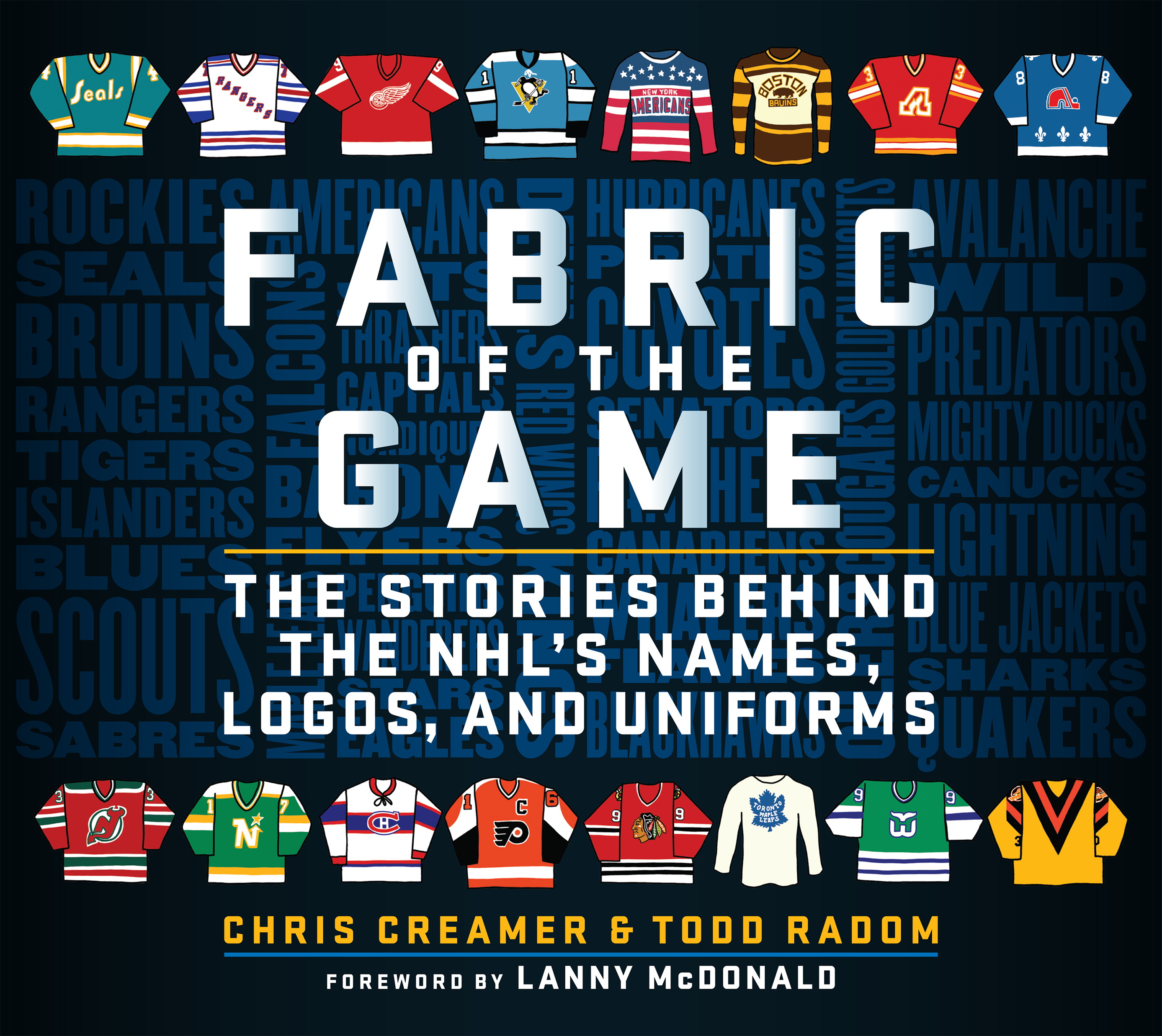
Three years on, Creamer and Radom are the co-authors of "Fabric of the Game: The Stories Behind the NHL's Names, Logos, and Uniforms," a coffee-table offering published Tuesday through Simon & Schuster. True to the title, their book is a one-stop resource to learn how 47 NHL franchises - current, relocated, defunct, and even the roster-less Seattle Kraken - were named and outfitted.
The authors recount the saga of the Montreal Wanderers, the charter NHL team that took its name from British soccer, played six games in 1917, lost its home arena in a fire, and promptly folded. They celebrate the advent of outdoor games, the ideal setting for throwback uniforms. They chronicle the excesses of the 1990s when the Mighty Ducks of Anaheim's Disneyfied original jersey - featuring splashes of purple, teal, yellow, silver, black, and white - set league sales records. The Maple Leafs and Red Wings are in the book, too, forever sporting blue and red as models of sartorial consistency.
Walter Gretzky is a bit player in Creamer and Radom's narrative; he garners a shoutout in the acknowledgments for his presence at the restaurant on that formative day. Naturally, his son is a central character. In words and photos, proceeding through each team alphabetically, the book recalls Wayne Gretzky rocking blue and orange for the Edmonton Oilers in his first NHL season, the LA Kings' new silver uniform on the day he was traded in 1988, and the Blues' red-tinged garb during his stint in St. Louis in 1996. (Seriously, the '90s were a trip.)
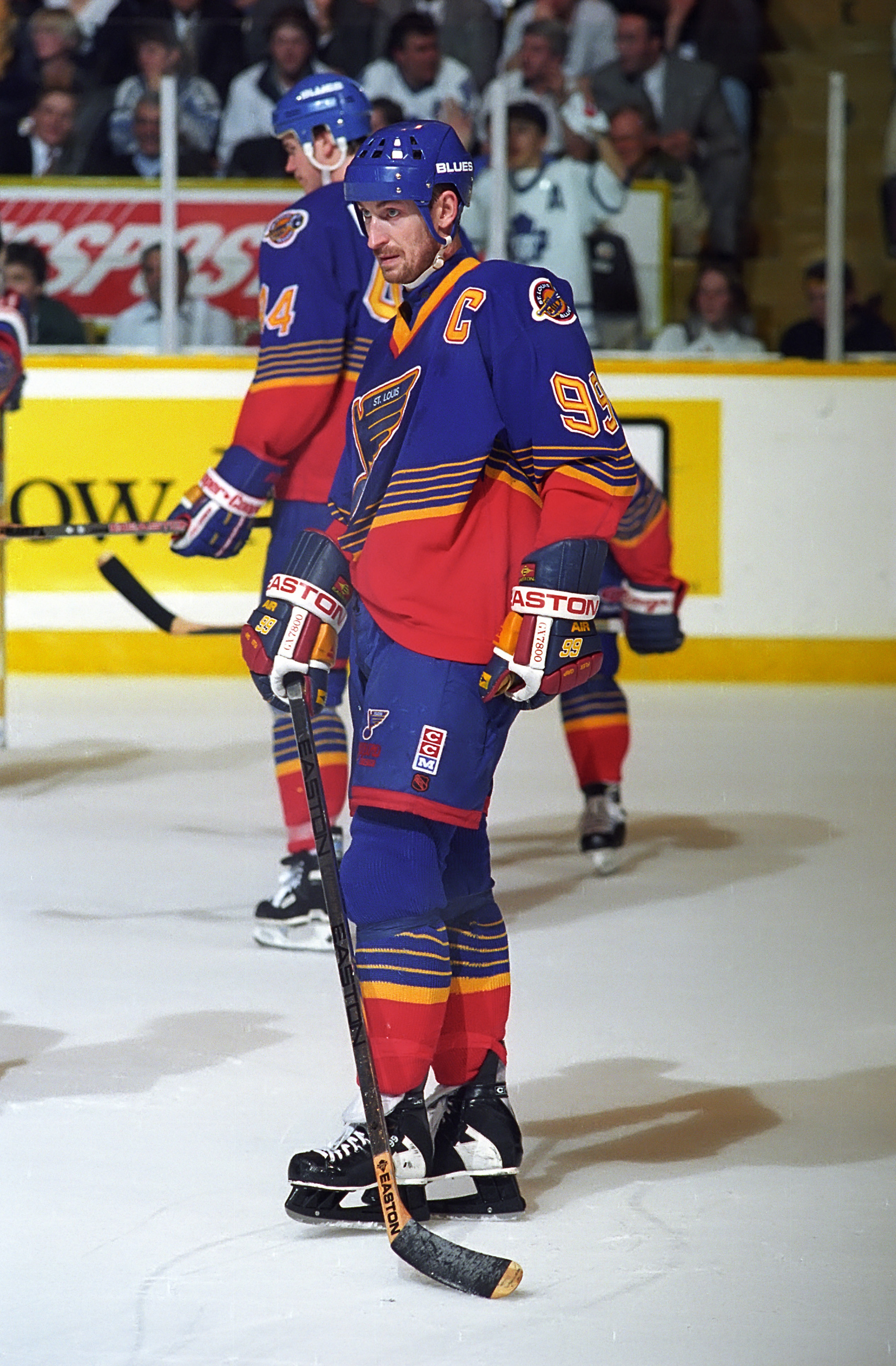
The origin stories Creamer and Radom tell form a definitive account of the subject, something Creamer, the Toronto-based editor of SportsLogos.net, wishes he could have read as a kid.
To find exhaustive historical detail, he and Radom plumbed newspaper articles dating as far back as 1909, when the Montreal Canadiens were created and New Jersey farmers banded together to hunt the Leeds Devil, the fabled fiend whose namesakes now play in the Metropolitan Division. They interviewed executives who thought up more recent designs, from Colorado's mountainous "A" to Minnesota's tranquil wilderness scene to the Islanders' ill-fated fisherman logo of the mid-'90s.
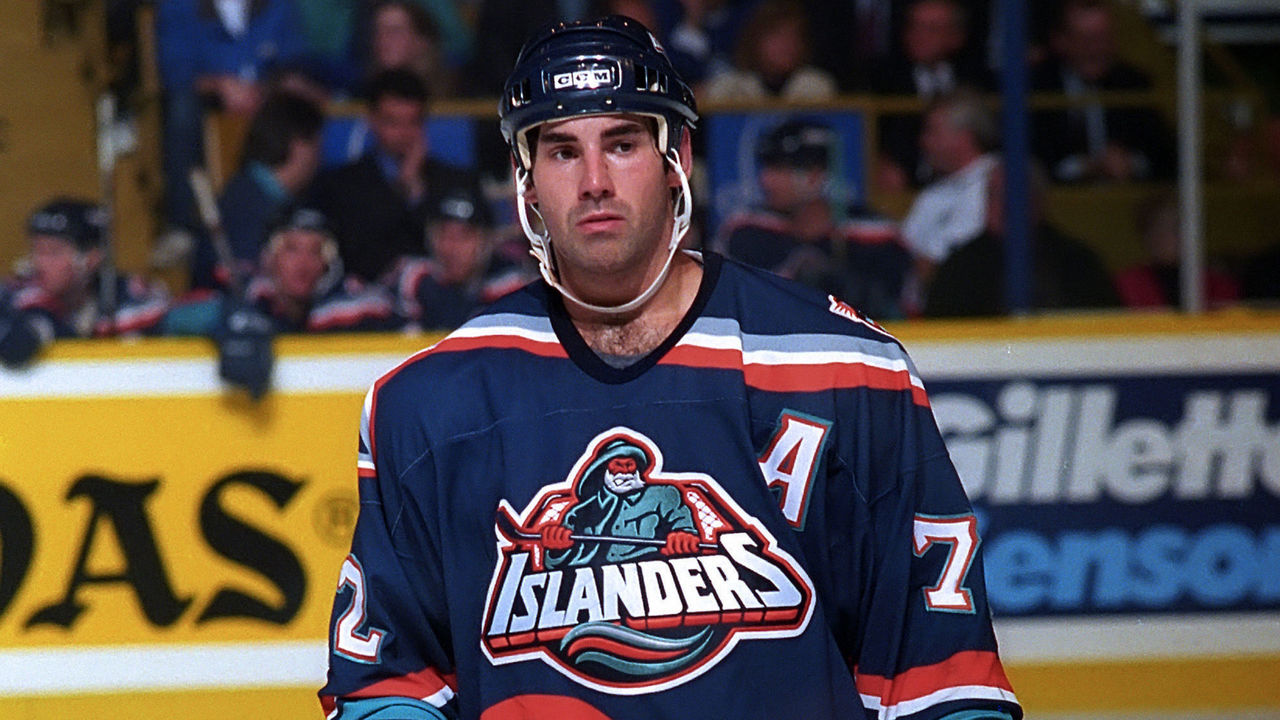
Clearly, some looks are cleaner and more memorable than others. The concept itself, the authors suggest, is what's distinctive, charming, and timeless.
"NHL hockey, in particular, you think of the sweater. We have this history of very bold, big crests that instantly communicate what they're trying to communicate," said Radom, an accomplished graphic designer. Style specifications, he explained, complicate jersey design in other sports: buttons in baseball, big numbers in football, the smaller surface area in basketball. Those constraints don't apply to hockey, maximizing the chance a jersey - through the front emblem, vivid color, and connective striping - will come to be indelible.
"The hockey sweater, in my estimation," Radom said, "is the most complete uniform in sports."

If NHL logos are so alluring, it only makes sense they spawn myths, inspire cult followings, and provoke visceral debate. "Fabric of the Game" addresses all of those notes. Creamer and Radom set the record straight about the Boston Bruins' abiding spoked "B." True: Developed to honor the club's 25th anniversary in 1949, it's the rare specialty mark that evolved into a primary logo. False, as far as they can tell: It represents an old nickname for the city of Boston, "Hub of the Universe."
Creamer and Radom break down the elements of forsaken yet fondly remembered logos, including the Quebec Nordiques' classic insignia: the igloo-resembling red "N" originally sketched by a local teenager and accompanied by white fleurs-de-lis that evoke the provincial flag. The book lauds the simplicity of the Hartford Whalers' whale tail - and laments the team's 1992 decision, championed by general manager Brian Burke, to inject silver into the mark, alerting the eye to the implicit "H" in the middle.

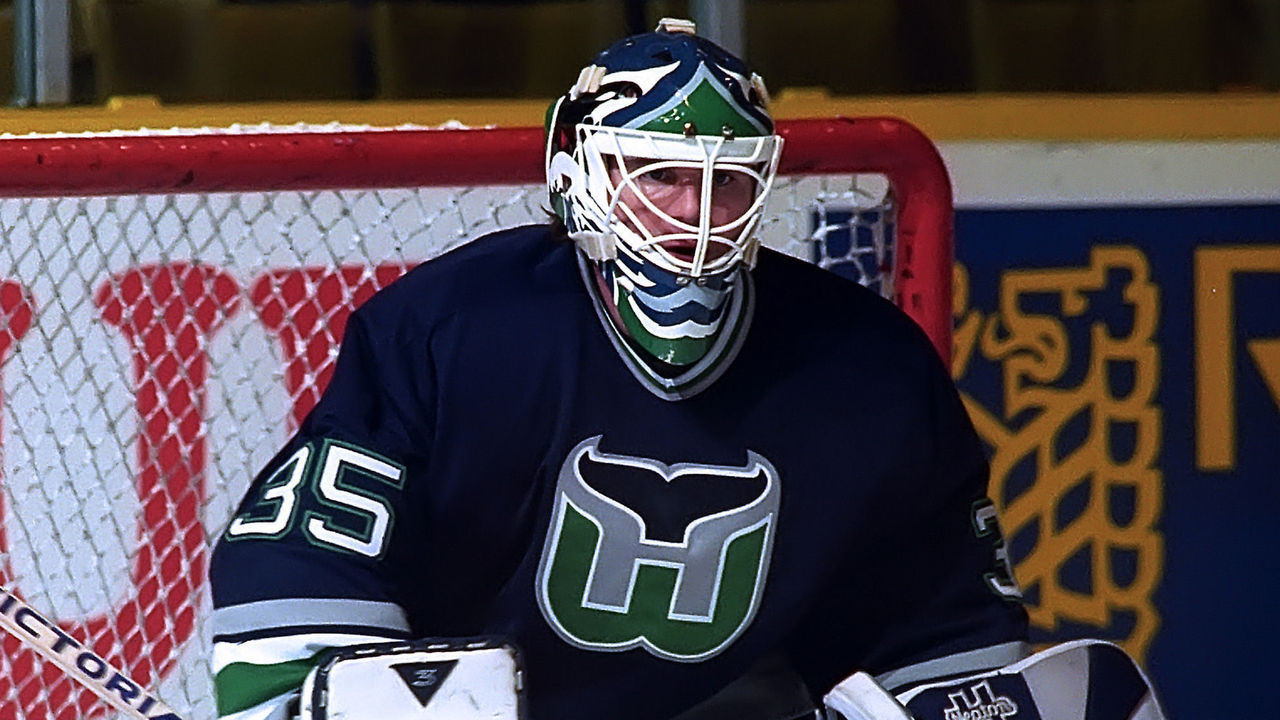
The book also explains how all 47 teams were named. A few themes recur in those stories.
Intriguing inspirations: This category accounts for New Jersey and Seattle deriving identities from mythic creatures. For the Mighty Ducks latching on to the popularity of a certain Disney film. For Panthers ownership seeking to highlight the plight of Florida's endangered state animal. Did you know the Tampa Bay Lightning, according to Phil Esposito, were named during a storm? Or that a wartime bootlegger told an early Vancouver owner to name his team after Johnny Canuck, Canadian cartooning's answer to Captain America?
"Who would have thought that the Canucks' identity began with a guy who was illegally peddling alcohol back in the 1940s?" Creamer said.

Misadventurous anecdotes: Think of the 1967 expansion team that cycled through six names in 11 seasons: California Seals, Oakland Seals, Bay Area Seals, San Francisco Golden Seals, California Golden Seals, Cleveland Barons. Think of the Calgary fan who, following the Flames' 1980 move from Atlanta, tried to enter the team's nickname contest but instead mailed their utility bill. Think of Chicago brass declaring in 1986 that the name should be Blackhawks, not - as had been the case for 60 years - the Black Hawks, nor any other kind of bird.
Names that didn't stick: Columbus, the birthplace of the Wendy's fast-food chain, would have been home to the "Frostys" had burger magnate Dave Thomas gotten his way, Creamer and Radom write. For a time, the Avalanche's original owner, Charlie Lyons, purportedly wanted to rename the Nordiques the Rocky Mountain Extreme. Before the Predators took the ice in Nashville, Gary Bettman had to spike the name "Edge," the moniker of a shaving gel once sold by the SC Johnson conglomerate, the family business of owner Craig Leipold's wife Helen.
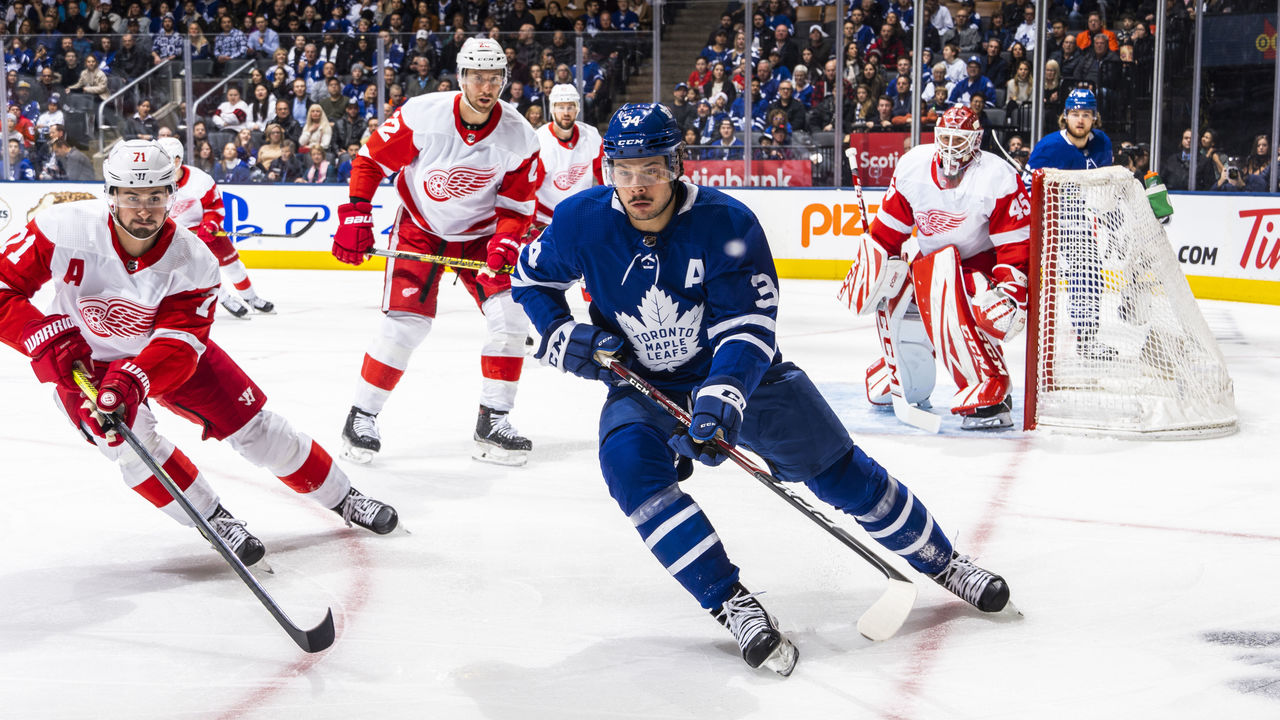
Even Original Six names weren't always sacrosanct. Chicago almost became the Yankees in 1937, befitting ownership's short-lived plan to ice an all-American lineup. Detroit played four NHL seasons as the Cougars - honoring the roots of the club's first players, who were acquired from a defunct British Columbia team of the same name - until it became painfully evident Michiganians couldn't pronounce the word. Was it "Cow-gars"? "Cowg-ders"?
"I kept finding example after example from different newspapers in the late 1920s alluding to this," Radom said. "It was hilarious."
Book projects have firm deadlines, but NHL designs are fluid, which is why "Fabric of the Game" omits mention of some recent wardrobe changes. The Dallas Stars' neon, Texas-shaped alternate logo seems to jibe with trends Creamer has noticed around the league: the shift to adopt bright, captivating color schemes and ensure logos appear sharp at any scale, on jerseys and Twitter hashtags alike. Why are the Ottawa Senators resurfacing the 2D centurion? The book has evergreen wisdom to share, if not a specific answer: Throwback threads are a comforting reminder of the past.
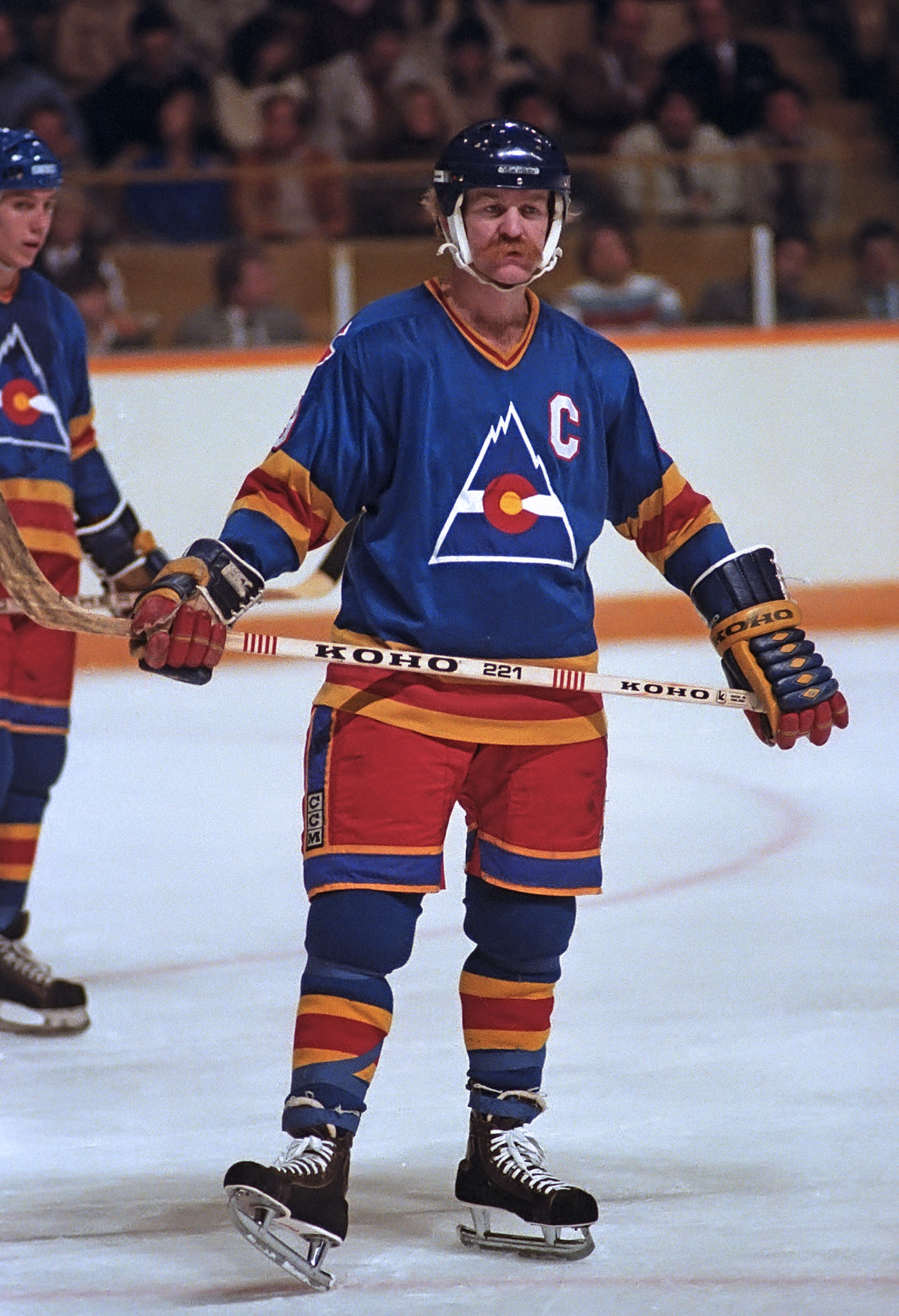
When Lanny McDonald wrote the foreword to "Fabric of the Game," the mustachioed Hall of Famer took the opportunity to visualize the trajectory of his career. For much of the 1970s, he wore Toronto's ubiquitously recognizable maple leaf. The Colorado Rockies' kaleidoscopic look - modeled after the state flag - was far flashier. Raised in Alberta, McDonald later joined and eventually won a Stanley Cup with the Calgary Flames, who still don the fiery "C" he adored.
Creamer was grateful for McDonald's contribution. His childhood introduction to hockey came in May 1989, when the Flames beat the Canadiens in six games to clinch that championship. Young Creamer, entranced by McDonald's playoff beard and undeterred by his subsequent retirement, briefly became a Flames fan.
"Iconic is a word that gets thrown around way too often these days. Lanny McDonald is iconic. He looks iconic. His career was iconic. Even today, as the chairman of the board of the Hockey Hall of Fame, he remains out there and iconic," Radom said, summarizing what it meant to the authors to include his name on the cover.
"It elevates us, to wrap it all up. In the (same way as) Walter Gretzky looking after us that night."
Nick Faris is a features writer at theScore.
Copyright © 2020 Score Media Ventures Inc. All rights reserved. Certain content reproduced under license.